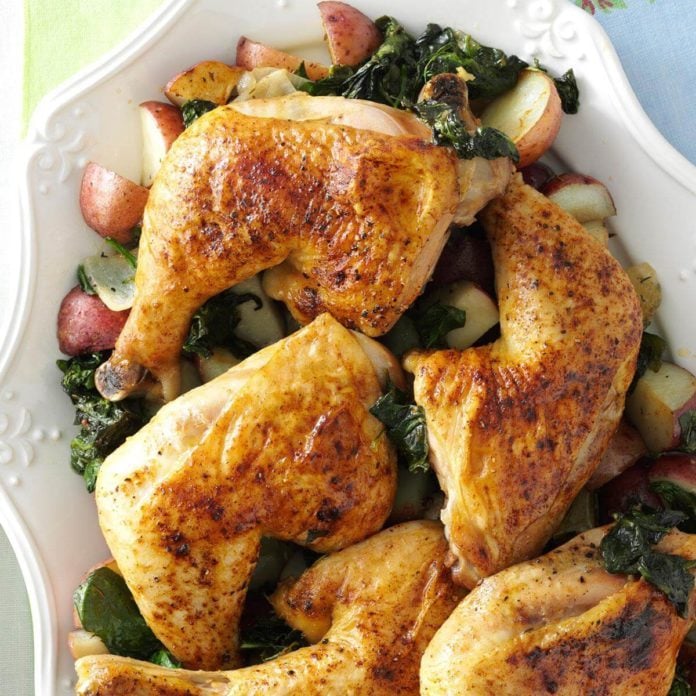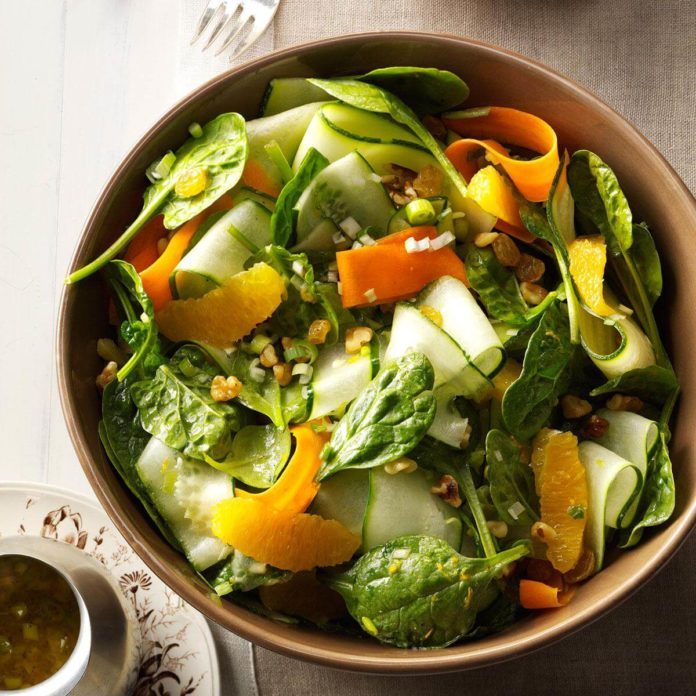The rules that govern kosher cooking and eating are detailed—and we mean detailed. Truly keeping kosher requires rigorous adherence, and in the case of restaurants and commercial kitchens, the careful watch of a religious supervisor to make sure all rules and spiritual laws are followed.
When it comes to keeping kosher, there are plenty of surprises for the uninitiated. Here are just a few:
1. Not all foods are kosher foods
You might know that those who keep kosher avoid eating pork, since pigs don’t qualify as kosher. But sea creatures without fins and scales are off-limits, too. This means no lobster, crab legs or beluga caviar (it comes from whales—no scales). Birds of prey also make the nonkosher list, as do any foods derived from animals that aren’t considered kosher. Gelatin, for example, can be problematic if derived from pigs or horses.
2. Preparation is key
It’s not only about what foods are kosher, but how they’re prepared. From the slaughterhouse to the kitchen, strict rules of preparation must be followed to make sure a food remains kosher. For example, meat and dairy must never be combined—or even touched by the same utensil, even if that utensil has been washed.
Some kosher salt, despite the name, may not be certified kosher at all. Instead, it gets its name from originally being used in the process of koshering meats. (Anything store-bought must be certified as kosher to be certain.)
3. Not everyone keeps kosher
As with every religion, there are those who follow the text literally, those who loosely follow it and those who fall somewhere in between. In the U.S., 22% of Jewish people consider themselves Orthodox—a group that knows the rules and follows them to the letter.
Others identifying as Conservative know the rules and follow many, making exceptions as necessary. Reform Jews may or may not know the rules, and follow them according to what feels appropriate in a given context—or not at all. (Reform Judaism is the religion’s most populous denomination in the U.S.)
4. There’s an additional level of kosher for Passover
During the eight days of Passover, an additional set of kosher rules apply, which are primarily to avoid any food that contains leavening. Matzoh is eaten during Passover because it’s unleavened bread.
In addition, to be kosher for Passover, food purchased from a store must be certified as “kosher for Passover,” and food that is not kosher for Passover must be segregated from food that is.
5. Rules schmules…
Kosher food doesn’t have to be Jewish, and Jewish food doesn’t have to be kosher. Pretty much any style or type of cuisine can be made kosher with the proper ingredients and set-up in the kitchen. In fact, you can find kosher Chinese restaurants in New York City, where there are hundreds of kosher restaurants.
There’s also kosher-style cooking, which you can think of as “kosher-ish.” Think brisket, bagels and lox. Think deli sandwiches, although generally, “kosher-style” does still segregate milk from meat during a meal and eschews forbidden foods. But kosher-style cooking can include any dish that celebrates Jewish culture or that you might associate with “Jewish” cuisine. Any of these Jewish foods would be considered kosher-style, and we think they’re delish!
Celebrate With These Kosher for Passover Recipes
Pop this homey dinner in the oven for about an hour, then enjoy! It's got plenty of flavor—the meat juices help cook the veggies just perfectly. —Sherri Melotik, Oak Creek, Wisconsin
Get Recipe
A variety of winter vegetables gives the broth for this classic Jewish soup a deep flavor. You can use a few green onions instead of the leek. —Taste of Home Test Kitchen
Get Recipe
Give tender beef a festive touch with cinnamon, cloves, coriander and a kiss of sweetness from orange and dates. —Taste of Home Test Kitchen
Get Recipe
Radishes aren't just for salads anymore. This abundant springtime veggie makes a colorful side to any meal. —Taste of Home Test Kitchen
Get Recipe
A standout cauliflower side is easy to prepare with just a few ingredients. Crushed red pepper flakes add a touch of heat. —Susan Hein, Burlington, Wisconsin
Get Recipe
Next time you're rushed by last-minute guests, try this fancy, flavorful salmon. With pistachios, brown sugar and dill, it's a guaranteed hit. —Cathy Hudak, Wadsworth, Ohio
Get Recipe
My family is turning to quinoa more and more these days. It's a super grain that's packed with protein and vitamins. Plus, it can be paired with any kind of main course. —Jenn Tidwell, Fair Oaks, California
Get Recipe
It’s elegant. It’s special. And it will have your guests thinking you went all out. They don’t have to know how simple it is. —Susan Nilsson, Sterling, Virginia
Get Recipe
I like to put this side into the oven to roast with the main dish. The artichokes give it a gourmet appeal. —Marie Rizzio, Interlochen, Michigan
Get Recipe
Zucchini, cucumbers and carrots are peeled into “ribbons” for this citrusy salad. We like to serve it for parties and special occasions. —Nancy Heishman, Las Vegas, Nevada
Get Recipe
In general, procedures for roasting meat apply to poultry, too. That means if you use a dry rub on a steak, a dry rub will benefit a chicken. A blend of paprika, onion powder, garlic powder and cayenne go on the skin and inside the cavity for a bright, spicy roast chicken. —Margaret Cole, Imperial, Missouri
Get Recipe
Popovers have an important role at the Passover table, substituting for bread. When puffed and golden brown, they’re ready to share. —Gloria Mezikofsky, Wakefield, Massachusetts
Get Recipe
Here’s one dish that never gets old in our house. Tender and juicy, with a great sweet and sour twist. We’d eat it every night if we could! —Jolie Albertazzie, Moreno Valley, California
Get Recipe
We have a family member that has diabetes, so dessert can get tricky. These sweet, nutritious stuffed figs keep us all happy. —Bob Bailey, Columbus, Ohio
Get Recipe
This addictive vegetable combo is a fresh take on one of my mother's standard wintertime dishes. I usually add more carrots—as many as the pans will hold. —Lily Julow, Lawrenceville, Georgia
Get Recipe
I love lamb stew, but wanted to try something a bit different, so I created this recipe that uses Moroccan spices. It's a wonderful way to use lamb, and it's easy to make in the slow cooker. The stew tastes even better served a day or two later, when the flavors have really had a chance to meld. —Bridget Klusman, Otsego, Michigan
Get Recipe
It's hard for our family to imagine eating mashed potatoes any other way but this. It tastes great on its own or drizzled with tahini sauce. —Nikki Haddad, Germantown, Maryland
Get Recipe
The trick to avoid overcooking a good piece of fish is to cook it at a high temperature for a short amount of time. Do that and the fish stays moist and tender. —Sherry Day, Pinckney, Michigan
Get Recipe
Every Christmas, friends have a huge potluck party. I wanted to bring something unique, so I topped off endive and watercress with jewel-toned pomegranate seeds. —Alysha Braun, St. Catharines, Ontario
Get Recipe
My roasted salmon is so simple but elegant enough to serve to company. I make it on days when I have less than an hour to cook. —Luanne Asta, East Hampton, New York
Get Recipe
When it comes to fixing asparagus, I think it's hard to go wrong. The springy flavors in this easy recipe burst with every bite. —Jenn Tidwell, Fair Oaks, California
Get Recipe
Charoset with apples, walnuts and spices has a special meaning for the Passover holiday. It represents mortar used for brickmaking when the Israelites were in Egypt. The sweetness represents freedom. —Gloria Mezikofsky, Wakefield, Massachusetts
Get Recipe
These pretty cookies are perfect for the special holiday season and pretty easy to make! —Deirdre Cox, Kansas City, Missouri
Get Recipe
The post 5 Things You Didn’t Know About Kosher Cooking appeared first on Taste of Home.
Lauren Cahn






















